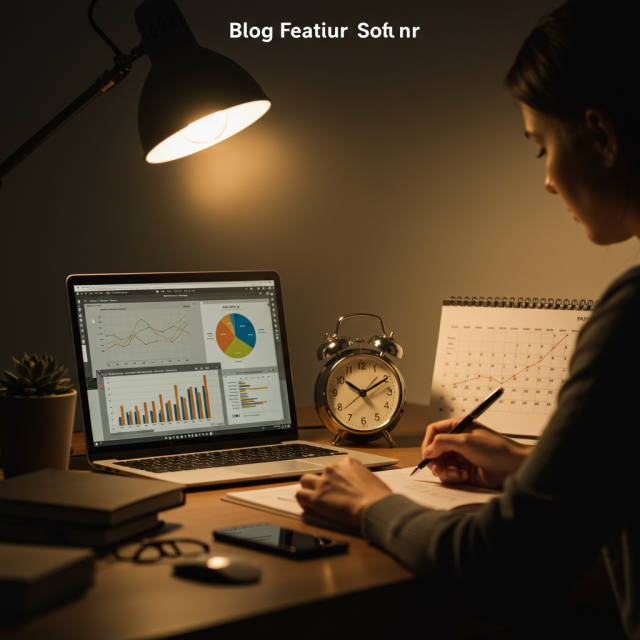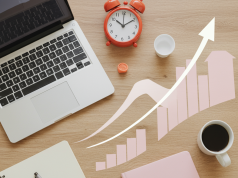Mastering Time and Focus: 8 Advanced Productivity & Life Hacks Backed by Science
In today’s fast-paced world, juggling multiple responsibilities can leave us feeling overwhelmed and unfocused. While everyday to-do lists and calendar reminders help, truly transformative results come from adopting advanced, science-backed strategies. In this post, we explore eight powerful productivity and life hacks designed to sharpen your focus, maximize your energy, and help you manage time more effectively. Whether you’re a busy professional, a student, or someone striving for better work-life balance, these practical techniques will guide you toward sustained peak performance and well-being.
1. Use the Eisenhower Matrix to Prioritize Tasks
Dwight D. Eisenhower famously said, “What is important is seldom urgent, and what is urgent is seldom important.” The Eisenhower Matrix sorts tasks into four quadrants: urgent & important, important but not urgent, urgent but not important, and neither urgent nor important. By categorizing your to-dos each morning, you can focus first on high-priority work that moves you closer to your long-term goals rather than getting bogged down by urgent but low-value requests. Scientific studies on decision fatigue suggest that preclassifying tasks reduces mental load and boosts efficiency. To apply this hack, draw a simple four-box grid on a whiteboard or digital note app, then list your tasks under each heading. Start your day with quadrant one, schedule time blocks for quadrant two, delegate or automate quadrant three, and eliminate quadrant four items entirely.
2. Implement the Pomodoro Technique with Micro-Breaks
The Pomodoro Technique partitions work into focused 25-minute intervals called “pomodoros,” separated by short breaks. Research on sustained attention shows that the human brain can maintain peak concentration for roughly 20–30 minutes before performance drops. By following a cycle—25 minutes of work, 5 minutes of rest, and after four cycles a longer 15- to 30-minute break—you harness natural attention spans and prevent burnout. During breaks, step away from screens: stretch, hydrate, or practice deep breathing. These micro-breaks promote blood flow, reduce eye strain, and mentally reset you for the next session. Numerous productivity experts report that coupling timed focus with mindfulness breaks significantly raises output quality and fosters a sense of accomplishment as you tick off completed pomodoros.
3. Embrace Digital Minimalism and Notification Batching
Constant pings and pop-up alerts fracture attention and drive stress. Digital minimalism advocates for intentional technology use: audit your apps, remove those that don’t add value, and consolidate notifications to specific check-in windows. Studies in behavioral psychology indicate that each incoming notification triggers a dopamine response, compelling you to switch tasks. To break this cycle, disable noncritical alerts and schedule checking email, messaging, and social media two or three times daily—preferably outside your peak productivity hours. Use website blockers or focus modes on your devices to enforce these boundaries. By batching digital interactions, you reduce cognitive overload, sustain deeper work sessions, and reclaim time that would otherwise be lost to mindless scrolling.
4. Adopt Theme Days for Deeper Focus
Theme days assign entire days of the week to specific categories of work—creative projects on Monday, administrative tasks on Tuesday, meetings on Wednesday, and so forth. This approach, popularized by productivity coach Jack Dorsey, leverages the principle of context switching costs: when you spread similar tasks across discrete time blocks, you minimize the mental overhead of shifting gears. Over the course of a week, theme days help you allocate uninterrupted blocks for deep work, strategic planning, and administrative upkeep without interfering with each other. At the start of each week, outline your themes in your digital calendar or planner. Having predictable routines reduces decision fatigue, steadies your workload, and heightens your ability to deliver high-quality results in each domain.
5. Apply the Two-Minute Rule and Task Batching
Productivity guru David Allen’s Two-Minute Rule states that if a task takes less than two minutes, do it immediately. Small actions—sending a quick email, filing a document, clearing a surface—pile up mentally when postponed, eroding focus. Conversely, grouping similar tasks (batching) such as replying to all client inquiries at once or preparing multiple reports in one session reduces setup time and maximizes efficiency. Cognitive scientists note that each task switch incurs a “restart penalty,” costing valuable mental resources. By tackling micro-tasks on the spot and grouping related actions, you trim distractions and keep your workflow streamlined. Over time, this dual strategy frees up significant headspace for more demanding, creative responsibilities.
6. Harness the Power of “No” with Essentialism
Greg McKeown’s essentialism philosophy teaches that doing fewer things excellently is superior to doing many things adequately. Saying “no” to nonessential requests or projects safeguards your time for high-impact work. Research in organizational behavior highlights that employees who set clear boundaries experience lower stress and higher satisfaction. Begin by defining your top three objectives for each month. When new opportunities arise, evaluate whether they align with those objectives. If not, respectfully decline or defer. Craft polite but firm scripts: “Thank you for thinking of me, but I’m fully committed to current priorities.” Over time, your calendar reflects only mission-critical engagements, allowing you to invest energy where it truly counts.
7. Design a High-Impact Morning Routine
How you start your day shapes your productivity trajectory. A consistent morning routine—often called the “Victory Hour”—might include hydration, light exercise, journaling, and a brief meditation session. Clinical studies show that physical movement and mindfulness upon waking elevate mood and cognitive performance. Spend the first 60 minutes away from digital devices: stretch or do yoga, write down three gratitudes or daily goals, and review your prime tasks for the day. This intentional sequence kick-starts your circadian rhythms, sharpens focus, and reinforces a sense of control. By insulating your morning from email or news feeds, you preserve mental clarity for the most important activities ahead.
8. Align Tasks with Your Energy Peaks (“Ultradian Management”)
Beyond the circadian rhythm, the brain operates in 90- to 120-minute ultradian cycles of high and low alertness. During peak periods, tackle your most cognitively demanding tasks—strategic planning, problem solving, or creative writing. When energy naturally dips, switch to lighter activities such as organizing files, responding to routine messages, or taking a short walk. Biopsychology research confirms that aligning work with these energy ebbs and flows can boost productivity by up to 20%. Use a timer or tracker to note your performance highs and lows over several days. Then structure your schedule accordingly, ensuring that your mental resources are used most effectively when they’re strongest.
Conclusion
Boosting productivity and enhancing life quality isn’t about sacrificing rest for relentless hustle—it’s about working smarter by leveraging scientifically validated techniques. From prioritizing with the Eisenhower Matrix to syncing your tasks with ultradian rhythms, each hack contributes to sharper focus, greater energy, and sustainable performance. Start by selecting one or two strategies that resonate most and gradually integrate additional hacks as they become habitual. With consistent practice, you’ll not only accomplish more but also experience less stress and a deeper sense of fulfillment. Embrace these science-backed productivity and life hacks today, and watch your daily routine transform into a streamlined pathway toward your most ambitious goals.









